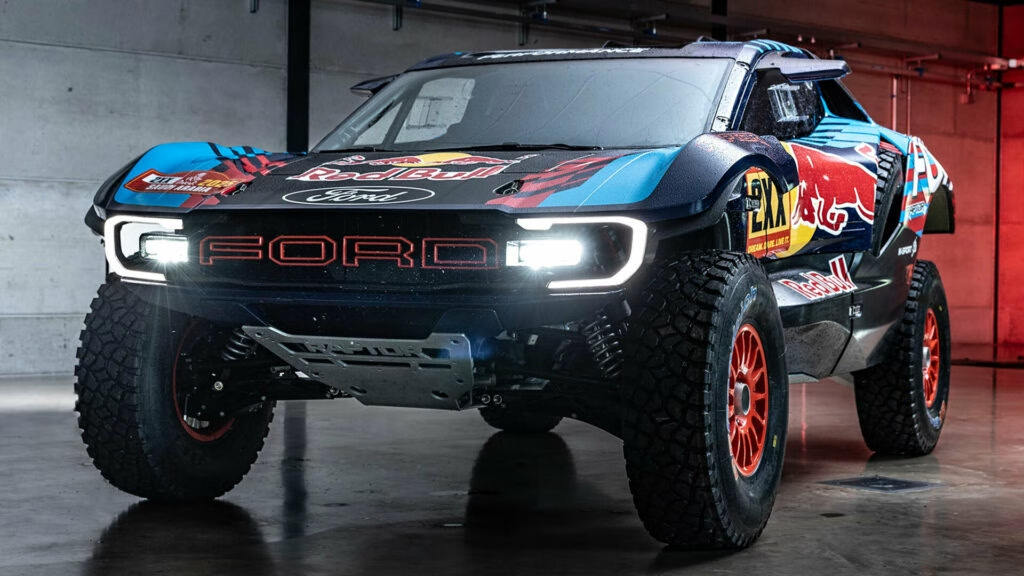What Would a 1,000 HP Off-Road Supercar from Ford Actually Look Like?
Let’s cut right to the chase: Ford’s CEO, Jim Farley, is openly mulling the idea of a 1,000-horsepower off-road supercar. Not a truck. Not a poser’s toy. Something that could actually take on the Baja 500 or the Dakar Rally and come out grinning. For anyone who’s watched the Bronco Raptor or F-150 Raptor tear up the desert, this is a tantalizing thought.
So, what would set this mythical beast apart? Farley’s vision is for something fully adjustable—think suspension travel, damping, and ride height all at your fingertips. And yes, it would be electrified, at least in part. The idea isn’t just to drop a big engine into a lifted coupe and call it a day. Ford wants to build a machine that’s as at home on gravel and sand as it is at a high-speed off-road race. Not a rock crawler, but a true high-speed, dirt-slinging supercar.
Why Is Ford Even Considering This Wild Idea?
It’s not just about horsepower wars or one-upping the Jeep Wrangler 392’s 470-hp Hemi V8. Ford’s already proven it can sell both affordable cars and high-end, limited-run monsters like the $300,000 Mustang GTD. The GTD, by the way, is a track weapon that’s been snapped up by enthusiasts who actually drive them—not just collectors looking to flip for a profit.
Farley’s point is simple: there’s a sameness to modern supercars. They’re fast, sure, but how many can survive a true off-road race? Lamborghini’s Huracan Sterrato and Porsche’s 911 Dakar have dipped a toe in the water, but Farley’s not convinced they’d last five minutes on the Baja circuit. Ford’s motorsports pedigree gives it a unique license to try something genuinely new—and the market seems hungry for it.
How Would This Supercar Stack Up Against Today’s Off-Roaders?
Let’s put some numbers on the table. The Bronco Raptor’s twin-turbo V6 puts out 418 hp and 440 lb-ft of torque. Impressive, but not earth-shattering. The Jeep Wrangler 392 edges ahead with 470 hp and 470 lb-ft. But a 1,000-hp, partially electric Ford supercar? That’s a different league altogether.
This isn’t just about raw power. Farley wants a car that’s fully adjustable on the fly, able to tackle different terrains at speed. Imagine a vehicle that can drop its ride height for stability on fast gravel, then jack itself up for deep sand. That kind of versatility is rare, even among today’s most advanced off-roaders.
Is There Really a Market for a $300,000 Off-Road Supercar?
It might sound crazy, but the numbers say otherwise. Ford sold out its run of $120,000 F-150 Raptor Rs, and the Mustang GTD’s order books are full. According to S&P Global Mobility, the ultra-luxury and performance car market has grown by over 20% in the past five years, with buyers increasingly seeking unique, experience-driven vehicles.
What’s more, Ford’s approach isn’t to flood the market. Farley insists they don’t want “posers” or speculators. The plan is to keep production tight, reward loyal customers, and make sure the cars actually get used. This strategy has worked before: Ford GT buyers often come back for the next special edition, and the GTD is already seeing repeat interest.
How Would Electrification Change the Off-Road Game?
Here’s where things get really interesting. Electrification isn’t just about going green—it’s about instant torque, precise power delivery, and the ability to fine-tune performance for different surfaces. A hybrid or fully electric off-road supercar could offer torque vectoring, regenerative braking, and even silent running for certain stages.
Take the Dakar Rally as an example. In 2022, Audi’s RS Q e-tron hybrid made headlines by winning several stages, thanks in part to its electric drive system’s flexibility. Ford could leverage similar tech, but with its own spin—perhaps integrating lessons from its Mustang Mach-E and F-150 Lightning programs.
What’s Ford’s Endgame Here—And Why Does It Matter?
Farley’s musings aren’t just idle talk. He’s “thinking really deeply about it,” and history shows that when Ford’s leadership gets serious, things happen. The company’s willingness to experiment—backed by a rich motorsports history—means this isn’t just a PR stunt. It’s a genuine attempt to shake up the supercar world and offer something no one else does.
The big takeaway? The next wave of off-road performance isn’t about perfection—it’s about smarter adjustments. Start with one change this week, and you’ll likely spot the difference by month’s end. If Ford pulls this off, the definition of a supercar could change forever. And honestly, isn’t it about time?

